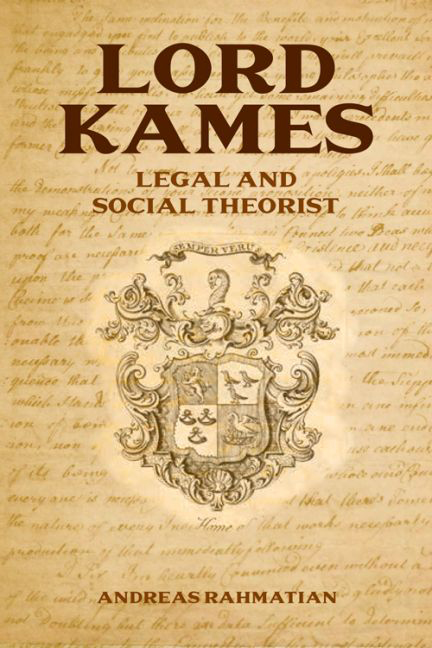Book contents
- Frontmatter
- Contents
- Preface
- Bibliography of Works by Lord Kames and Abbreviated References
- I Introduction
- II Aesthetics
- III Moral Philosophy I: Principles
- IV Moral Philosophy II: Development
- V Political Philosophy, Anthropology and Commerce
- VI Legal History, Legal Science and Comparative Law
- VII Property
- VIII Equity
- IX Obligations and Enforcement
- X Criminal Law
- XI Lord Kames's Influence on Some of the Founders of the United States
- XII A Critical Conclusion
- Bibliography
- Index
III - Moral Philosophy I: Principles
Published online by Cambridge University Press: 12 September 2017
- Frontmatter
- Contents
- Preface
- Bibliography of Works by Lord Kames and Abbreviated References
- I Introduction
- II Aesthetics
- III Moral Philosophy I: Principles
- IV Moral Philosophy II: Development
- V Political Philosophy, Anthropology and Commerce
- VI Legal History, Legal Science and Comparative Law
- VII Property
- VIII Equity
- IX Obligations and Enforcement
- X Criminal Law
- XI Lord Kames's Influence on Some of the Founders of the United States
- XII A Critical Conclusion
- Bibliography
- Index
Summary
Foundation and Principles of Morality; Duty and Justice
Moral beauty and the moral sense
The idea of a moral sense is closely attached to aesthetics and the sense of beauty in the Scottish moral philosophy of the Enlightenment. The power to perceive the ideas of beauty and harmony is an internal sense, and so is the ability to perceive and distinguish moral good and evil. This moral sense that empowers us to approve or disapprove rational actions in others makes such actions appear ‘beautiful’ or ‘deformed’. That conception was a fertile ground for Kames's project to connect aesthetics, moral philosophy and law or legal philosophy as the foundation for concrete legal rules. Kames's own moral philosophy will be presented first. Then it will be put in context with the moralists Kames was influenced by, especially Hutcheson and Shaftesbury, and thinkers with whom Kames has been in an intellectual exchange, such as David Hume, Adam Smith and Edmund Burke.
Kames considers moral philosophy (as well as aesthetics) firmly rooted in empiricism. He rejects a purely rationalist and speculative system of morals that contains rules for ‘human conduct … without the least consideration, whether they arise out of human nature, or can be accommodated to it’. The foundations of all morality which derive from the common nature of man are: there is the connection of being and actions, that is, cause and effect (‘Such as the being is such must its actions be’); there is also a uniformity of conduct peculiar to each species, and if this conduct conforms to the common nature of the species, it is regarded as regular, according to order and to nature. ‘The laws of each species’, so Kames, ‘are adjusted to the frame of the individuals which compose it, so as to procure the conveniences of life in the best manner, and to produce regularity and consistency of conduct’.
- Type
- Chapter
- Information
- Lord KamesLegal and Social Theorist, pp. 36 - 91Publisher: Edinburgh University PressPrint publication year: 2015

